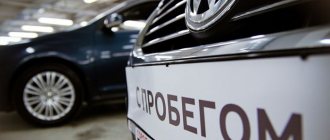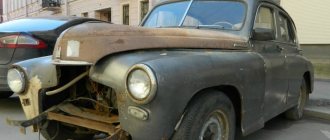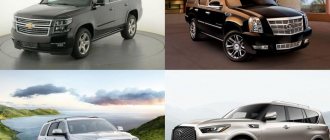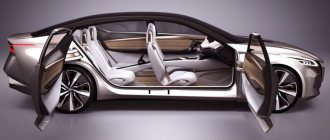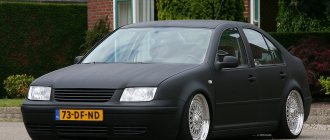Reading time: 10 minutes
When purchasing a car, few people think about how much it will cost to operate it. Attention is drawn mainly to gasoline consumption. But the service also includes the cost of spare parts, consumables, and maintenance. When considering the question of which car is the most reliable and inexpensive to maintain in Russia, you need to be guided by several parameters:
- Cost of spare parts. The more difficult it is to get parts for a car, the more expensive you will have to pay for them.
- Fuel consumption. An important indicator in car maintenance. The less often you have to refuel, the less family budget money will be spent. Compact French and Koreans can boast of low consumption.
- Engine power. This factor affects the amount of road tax. The bet is calculated per horsepower, and the greater the power of the car, the higher the bet per horsepower.
- Maximum mileage. Some cars can go quite a long way without any problems. For example, Japanese models easily exceed the 200 thousand km mark, and Mercedes do not break down at all until 300 thousand km. But each car has its own resource, after which you will have to either change the engine or get rid of the car.
- Timing for replacement of consumables. All cars require replacement of consumables (oil, filters, etc.) after a certain time. But here a lot depends on operating conditions and driving style.
- Maintenance. Paying for scheduled technical inspections of a new car in the showroom is, to put it mildly, puzzling. A simple oil and filter change, something that many people can do on their own, will cost a pretty penny. However, it is necessary to do maintenance in order not to lose the warranty.
- Easy access to units. Complex work to penetrate individual components makes repairs much more expensive. In addition, after the warranty period expires, many owners prefer to replace parts themselves.
Gasoline models are considered the most economical, but diesel car manufacturers are constantly improving engines and trying to reduce fuel consumption.
Russian cars
If we compare foreign cars and domestic cars, then, of course, the latter are cheaper to operate. Spare parts for Russian-made cars cost less, and the price list for repair work is much more modest.
Lada Vesta
Lada Vesta is one of the five best-selling cars in Russia.
The warranty period, like many foreign cars, is 3 years. But some consumables are replaced during maintenance. The manufacturer has modified the engine, now the unit is equipped with intake and exhaust systems and reinforced fastenings. The motor vibrates less and runs stably at low speeds. The car consumes 8 liters of fuel per 100 km. The car is no worse than foreign cars, packed with electronics, which have shown their reliability in operation.
Buying any spare part is not a problem. In addition, the parts are distinguished by affordable prices, because all components are produced in Russia.
Vesta's resistance to corrosion also attracts car enthusiasts. As tests in a salt chamber have shown, the machine can withstand a long time without rust, which is not typical for other models of the brand. The warranty period for the body has been increased to 6 years.
Lada Largus
The practical station wagon Lada Largus also falls into the category of economical cars.
The car is very roomy, which attracts taxi drivers. Even with constant use, it remains one of the most reliable cars that do not require special investments. Developed on the basis of Renault Logan, the car absorbed the best qualities of the French prototype: high-quality assembly, durability of the main components.
Service maintenance is carried out at intervals of 15 thousand km. High maintainability is ensured by the moderate cost of consumables and spare parts. The machine lasts a long time and rarely requires repairs.
Average fuel consumption does not exceed 8.2 liters per hundred kilometers. The engine is not very demanding on the quality of gasoline.
Lada 4×4
The compact SUV is in demand among Russians not only because of its increased cross-country ability, but also due to its inexpensive maintenance.
Spare parts for the model can be purchased at any roadside store. Even when used in difficult conditions, Lada rarely breaks down. The car has a rigid suspension, which allows you to easily overcome ditches and curbs without the risk of damage. A 1.6 or 1.7 liter injection engine almost never fails.
Unlike many SUVs, Lada 4×4 has low fuel consumption. On the highway - 8.3 liters, in the combined cycle - about 10 liters. The road tax on a car is one of the smallest.
Which foreign cars have the most expensive spare parts?
The cost of repairs largely depends on the prices of auto parts. According to some market research, the cost of spare parts for middle-class cars varies greatly. The most expensive brands are still Japanese:
- Honda
- Mazda
- Mitsubishi.
For example, spare parts for a car of the European brand Peugeot are approximately 3 times cheaper than similar parts for “Japanese” ones.
After these three in the ranking of the most expensive cars to maintain is the German-made Volkswagen. The top six most expensive auto parts are again closed by the Japanese brands Suzuki and Toyota.
The average cost of spare parts is observed among European brands, the cost of original components for which is quite moderate. These include:
- Renault,
- Skoda,
- Ford
- Opel is also in the middle price category, although spare parts for it cost only slightly above average.
Interestingly, many car owners prefer Japanese brands, falsely believing that servicing cars of European brands is more expensive due to the high cost of parts (after all, they are priced in euros). However, research by experts shows the opposite: contrary to popular belief, spare parts for “European” brands are cheaper than Japanese brands.
Every motorist dreams of buying car components at low prices. We would like to highlight several brands whose maintenance costs are several times cheaper than others:
- Citroen (France) – the cost of parts is approximately 20% lower than average prices;
- Hyundai (Korea) – the price of components is approximately 25% lower than the average cost;
- Chevrolet Daewoo (South Korea) – the price of repair materials is also about 25% lower than average;
- Nissan – it’s surprising that a Japanese brand is included in the list of cheap-to-maintain cars, the cost of parts for which is 9% lower than average prices and almost 50% cheaper than other Japanese brands.
Of the “foreigners,” the BMW X6 M requires the largest expenses from the owner. Its maintenance costs an average of 222,700 rubles per year.
In second place is the Hummer H2. The cost of owning an American SUV is 211,900 rubles.
The top three is completed by the Cadillac Escalade. You have to spend 203,100 rubles a year on its maintenance.
Of the domestic cars, the one that empties the owner's pocket the most is the TagAZ Road Partner. Caring for such a unique and rare car on our roads costs 145,500 rubles. On the first line of the rating, it is adjacent to another brainchild of the Russian automobile industry - the Taganrog TagAZ Tager.
In second place are two UAZ vehicles - Patriot and Hunter with expenses of 113,300 rubles.
Third place is occupied by LADA 4×4 with a cost of ownership of 94,800 rubles.
Chinese cars
The cost of spare parts for cars from the Chinese automobile industry is constantly decreasing. Today, models from the Middle Kingdom are becoming even cheaper to maintain than domestic ones. The difference is not very big, but it is still worth taking a closer look at Chinese cars, the quality of which has improved significantly recently.
Geely Atlas
A smart crossover that is equipped with intelligent communication and security systems. The car runs on 2.0 and 2.4 liter engines, developing power of 139 and 149 horses, respectively. But despite the large volumes, the car is very economical and consumes only 6 to 7 liters per hundred, depending on the modification.
Service will cost a little more, because the oil must be changed every 10,000 miles, but the engine will remain in excellent condition longer.
All components under the hood and on the bottom are covered with plastic, so dirt does not get on the units. The service life has been significantly increased, the engine life is 300,000 km, and this is only a guaranteed mileage without any problems. The engine lasts much longer.
Great Wall Hover
The SUV, simple and inexpensive to maintain, has already pleased motorists with several updates.
Power units have several versions - 2.0, 2.4 liters and diesel 2.8. The gasoline engine consumes 10 liters in mixed mode, and the diesel engine consumes 9.1 liters. With careful use, shock absorbers, silent blocks and other components will last up to 100 thousand mileage.
The minimum engine life declared by the manufacturer is 300,000 km. There are enough spare parts widely available.
The money has run out
The monthly income of drivers, according to a study by Gruzdev Analyze, fell by 3% during the reporting period. Last April, many car owners saw their incomes drop significantly, largely because they lost their jobs during the pandemic. Then income fell by 27%, and such a decrease for many car owners meant the need to abandon scheduled repairs of their cars.
It is noteworthy that at the same time purchasing power decreased by more than a third. This means that if earlier, when a driver came for a service - say, for an oil change service - he could also change the pads and discs based on the diagnostic results, but now he simply does not have the funds to purchase such “additional parts”. “Now it is almost impossible to expand the average bill for a car service center, despite any tricks,” notes Alexander Gruzdev, “because the money in the pockets of consumers has run out.” In such conditions, in his opinion, it is important to choose the right strategy for interacting with the client. The Fit Service network is working to increase the frequency of customer visits to the service. Obviously, the client will not do everything at once: for many this is not profitable. Therefore, it is important to track the car’s service history in order to invite the client in time and offer the type of work that suits him in advance. Another way to work with the client is to provide the opportunity to pay for repair work in interest-free installments for 12 months.
On average in the market, according to the results of the Gruzdev Analyze study, the number of motorists who save on servicing their cars has increased and now stands at 39% compared to 32% recorded in September last year. It is noteworthy that the share of those who plan to reduce these costs by purchasing cheaper spare parts is 28%. Another 21% save by purchasing these parts through a cheaper purchasing channel.
Korean cars
Models from South Korea have long and rightfully won the title of the most reliable and inexpensive cars. Manufacturers produce mainly budget cars, which significantly reduces the cost of their maintenance.
Hyundai Solaris
The popularity of Solaris remains unchanged due to the reliability and unpretentiousness of the car. Depending on the engine size, the car consumes 5.7-6.6 liters of fuel per 100 km. The manufacturer provides a warranty on the car for three years or 100 thousand kilometers. But this is only if the owner carries out scheduled technical inspections at an official service center.
Low fuel consumption and availability of spare parts are the main advantages of the Hyundai Solaris. Although experts say that cars with automatic transmissions “eat” much more fuel than those with manual transmissions.
It should be noted that the Koreans fully live up to the title of “the cheapest car to maintain.” The owners note that even with high mileage (100 thousand km), only consumables were replaced on the models. Overall, this is the best affordable car for everyday use.
Kia Rio
If you are deciding which Korean cars are the most economical, pay attention to the Kia Rio.
A small practical car, designed as a hatchback or sedan, is very attractive in appearance. The model is equipped with 1.4 or 1.2 liter engines. For those who want to save money, it is more logical to choose a less powerful engine, because when driving in mixed mode it consumes only 4.8 liters of gasoline.
Despite 84 hp. With. the car moves quickly around the city. For 1.4-liter engines, consumption increases to 5.7 liters, which, taking into account the use of 95-grade gasoline, implies larger expenses.
High-quality components and assemblies do not require repairs in the first 5 years of operation. If the car is operated correctly, then the engine, according to experts, can significantly exceed the resource specified by the manufacturer at 180,000 km.
Daewoo Nexia
The most economical machine to operate.
The selection of parts is much larger than for other cars of this class. The 1.5 engine produces 106 liters. With. The ride of the car is smooth thanks to the energy-intensive suspension. The car starts perfectly at any temperature. High-quality metal body is not subject to corrosion, so it will last a long time. Fuel consumption is average, a car with a manual consumes 6 liters on the highway and 8 in the city, an automatic transmission will require more - up to 7 and 9, respectively. The car runs on 92 gasoline.
It should be noted that the company's official representatives take special care of their clients. The service center will always help with repairs even after the warranty expires and offer a flexible system of discounts.
Toyota Prius
This Japanese car is almost always included in the ranking of the cheapest foreign cars to maintain. Because he's really good. Prius owners say that the model is ideal for our reality. In which there are high gasoline prices and long traffic jams.
Take the 2008 model, for example. Its consumption is 4.5 liters in winter and 4 in summer. Moreover, the car consumes not only 95 gasoline, but also 92 gasoline. And the Prius starts easily even in cold weather, at -30 ... -40°C. The car is also comfortable. You can even comfortably spend the night in it.
And of course, about service. At most, you only need to change the engine oil and filter. Iridium spark plugs must be changed every 40-60 thousand kilometers (price - from 450 rubles per piece). You can install an air filter for 600 rubles yourself in a minute. It must be changed every 20,000 kilometers. Brake pads last more than 50,000 km. Front wheel hubs should be replaced as needed. They cost about 5,000 rubles, replacement - approximately 1,500 rubles.
What is the price of the model? For 380,000 rubles you can easily buy a 2008 Prius with a 1.5-liter 76-horsepower engine and automatic transmission.
European cars
When we mention the European auto industry, we most often mean French and German cars. It is the French who hold the lead among foreign cars in terms of efficiency. Many models rightfully belong to the category of the cheapest cars to maintain.
Renault Logan
These are the most reliable cars that are in constant demand in Russia.
An inexpensive and very roomy car has long been loved by our compatriots. The models are equipped with a 1.6-liter engine, but with a difference in power - 82,102 and 113 hp. With. Depending on the location of operation, the car consumes from 5.6 to 8 liters of fuel per 100 km.
The total amount you will have to pay for a year of operation is a little over 1 thousand dollars per year. This includes fuel consumption, tax, insurance, and maintenance.
Renault Sandero
The updated version of Renault Sandero has become more attractive and comfortable.
The Russian assembly in no way detracts from the advantages of this car, but only makes spare parts more accessible. The compact body and high ground clearance appealed to Russian car enthusiasts, and the car sold well. The model is equipped with a 1.6 liter engine, which produces different power, depending on the version. Average fuel consumption (highway + city) does not exceed 7.1 liters per 100 km.
The car has a smooth ride and is comfortable to drive. According to users, Sandero starts in any weather, even at -38 degrees.
All components and assemblies are made of high quality and do not require replacement for a long period. During the first year of operation, you will need to spend about 1 thousand dollars on maintenance.
Skoda Rapid
Just like the Skoda Fabia, this car is considered one of the most affordable and unpretentious.
The budget sedan is very reliable in operation. The high standards that the German auto industry applies in the production of cars ensure build quality. The manufacturer offers 1.4 or 1.6 liter engines, which are combined with manual or automatic transmission. In the combined driving cycle, the amount of fuel consumed is just over 6 liters. During the first year of operation, you will need to spend $1,100 on maintenance, taxes, insurance and refueling.
Opel Astra
Opel is considered one of the most reliable and popular cars.
Good prospects are predicted for the updated Astra model. The manufacturer offers gasoline and diesel engines of varying power. Diesel consumes up to 5.5 liters of fuel, and gasoline – up to 5 liters. Transmissions, both automatic and manual, are designed for 6 steps. Excellent dynamics and smooth running add advantages to the car. In general, this is a car from the “there’s simply nothing to break” category. The machines are so reliably and well built. But if a breakdown occurs, it will not be difficult to find spare parts for Opel, which has been in use in our country for a long time.
Volkswagen Polo
An excellent sedan with excellent handling has established itself as a practical and reliable car.
The increased battery capacity and improved wiring cross-section allow you to start the car without problems at low temperatures (down to -36˚C). Laser welding is used to connect body parts, so the frame is very strong. Full galvanization ensures resistance to corrosion, the manufacturer provides a 12-year warranty on the body. The modern 1.6 liter engine is made in accordance with European standards. Depending on the modification, the engine can develop power of 90 or 110 hp. With. For 100 km of travel you will need only 5.5 liters of fuel in mixed mode.
The resource announced by the manufacturer is 500 thousand km. But it should be remembered that a lot depends on driving style, oil quality, and timely maintenance.
The cost of maintenance is low, and there are many spare parts at an affordable price.
Cost of owning a Nissan Qashkai car
We increase the dimensions - Nissan Qashkai, costing from dealers from 929,000 rubles. will cost approximately 120,150 rubles in the first year of ownership. The amount consists of a tax of 4,550 rubles. for a power of 130 hp, CASCO and OSAGO policies are approximately 65,000 and 9,600 rubles. respectively. With a consumption of 4.9 l/100 km, average expenses are approximately 50,000 rubles.
In total for 5 years: RUB 595,750. (119,150 rub./year or 4.77 rub./km).
Photo: Nissan Qashkai
Japanese cars
Representatives of the land of the rising sun cannot be ignored in the ranking of the most reliable cars. Quality here is the hallmark of almost all brands. Therefore, in operation, Japanese models do not require special intervention in the operation of components and assemblies. Spare parts are quite expensive, but they will have to be used extremely rarely.
Toyota Corolla
The simplicity and reliability of the engine of this car provided the model with the highest sales in the history of the automotive industry.
For this indicator, Corolla was included in the Guinness Book of Records. The most extensive work that a foreign car will require during the first ten years of operation will be routine maintenance and replacement of consumables. High-quality components provide all units with a long service life. All parts are expensive, but last a very long time. Fuel consumption is low: from 5 to 6.6 liters per 100 kilometers.
Toyota Yaris
The compact car for the city has won a worthy place among its classmates. In Russia, the most popular models are those with a 1.3-liter engine. The one-liter engine somehow didn’t catch on; apparently, people feel sorry for paying a lot of money for such a low-power car.
99 liters squeezed out by the engine. With. quite enough to quickly move around city streets. Smooth ride is ensured by MacPherson front suspension and semi-independent rear suspension.
Fuel consumption ranges from 4.8 to 6 liters per 100 km. All components are of high quality, so the machine does not need repairs for a long time. It will cost about 4 thousand dollars to maintain the car for 5 years. This economical car is ideal as a reliable means of transportation.
Toyota Prius
The model is the world's first mass-produced hybrid car. The movement is carried out through the use of two engines - gasoline and electric. The introduction of two types of engines made it possible to reduce fuel consumption to 3-4 liters per 100 kilometers.
This is the cheapest car to maintain, which fully compensates for its initial cost. The car has increased oil change periods and engine life, so depending on the mileage, only consumables will have to be changed. The owners claim that the cost of any Toyota Prius module does not exceed 5 thousand rubles.
The maximum price for a timing belt is 10 thousand rubles. After 100,000 mileage, that is, after approximately 2 years of operation, it is necessary to check and, if necessary, replace the brake pads, spark plugs, and gearbox oil.
Nissan Almera
Due to the fact that Almera was assembled in Russia some time ago, spare parts for the car are available in a wide range.
This is a reliable sedan that does not require special repairs. The model is equipped with a K4M engine, which is constantly being improved by the manufacturer. With careful operation, a 1.6-liter engine can run up to 300 thousand km without breakdowns. The car is equipped with a 5-speed manual transmission or a 4-speed automatic transmission. Owners note the good performance of the machine; they very rarely make complaints about it.
The service interval is 15 thousand km, or once a year. The scope of work includes changing oil and filters. The spark plugs will have to be reinstalled every 30 thousand km, and the timing belt - after 60 thousand km.
It should be remembered that many Japanese brands are branded. And, as you know, the cost of spare parts for prestigious models includes, among other things, a brand component. Therefore, it is not surprising that the overpayment can exceed the real price by almost half.
In recent years, the price tag for spare parts for Japanese cars has increased significantly, so they are gradually leaving the segment of the most affordable foreign cars. The exception is older models, on which our craftsmen have long ago adapted to installing parts from Renault.
The best-selling cars on the secondary market
What is the best used and affordable car to buy? Russians do not stop buying cars even in times of crisis. But the vector of buyer interest is gradually shifting towards options that combine quality, style and low cost. From these models, a rating of the best-selling cars in Russia on the secondary market is formed.
1 - KIA Rio
Every year the Koreans are conquering the Russian market more and more confidently. And a clear confirmation of this is the sales volumes of KIA Rio, which increased by 35% in 2019-2020. In general, the model attracts buyers:
- absence of critical faults;
- interesting design;
- a modern approach to the implementation of ideas.
A special advantage of Rio is that the manufacturer has introduced a number of necessary changes to the line intended for Russian consumers:
- increased the wheelbase;
- developed a special series of motors;
- provided package options for heat and more.
The advantages of the car include:
- good suspension;
- convenient settings;
- controllability;
- high level of safety (up to 92%).
The last factor allows us to classify KIA Rio as the most reliable car.
2 - Hyundai Solaris
Another Korean in the ranking of the most popular and reliable cars on the secondary market. And this is understandable, given that the Hyundai Solaris was created with an eye on Russia with all its features. Therefore, both the first and second generations of these machines are in demand among buyers.
The restyled model received a huge number of positive reviews. Owners and experts especially highlight:
- updated suspension;
- improved handling;
- optimal approach to configurations;
- rich interior decoration;
- engine flexibility.
Among the disadvantages that most often “pop up”:
- poor sound insulation;
- inconvenience for rear seat passengers (low ceilings, shaking).
But even despite its shortcomings, Hyundai Solaris is in great demand. And this trend, according to expert data, will be observed for another 5-6 years.
3 – Nissan Qashqai
Good and stylish cars don't have to be expensive. And a striking example of this is the Nissan Qashqai. The model is not considered budget, but at the same time it is in the middle price segment. About 6 years ago, this car was recognized as the best in its class and still meets all the expectations of its owners.
Its undoubted advantages:
- aggressive design;
- reliable suspension;
- good sound insulation (after restyling in 2009);
- spacious interior;
- permeability;
- power unit with a large resource reserve.
The main drawback of the model is the insufficient reliability parameters identified during tests.
4 — Toyota Land Cruiser Prado
The Toyota Land Cruiser Prado has taken its place in the hearts of Russian motorists. For more than 15 years it has been in high demand, despite the rather high cost of even very used models.
Among the advantages of a car, owners most often name:
- frame structure;
- independent front suspension;
- the ability to choose a gasoline or diesel version of the engine.
Prado is distinguished by its reliability and increased cross-country ability. Therefore, it is optimal for country trips. But in 85% of cases it is purchased for moving around the city.
A significant drawback of the car is complex and expensive repairs.
5 - Volkswagen Polo
Among the most popular cars on the secondary market, the Volkswagen Polo occupies far from the last place. Moreover, it is usually included in 2 ratings:
- popular sedans;
- the most reliable and inexpensive station wagons on the secondary market.
In general, the Volkswagen Polo attracts with its affordable price, unpretentiousness, long service life and reinforced suspension. But owners rarely manage to evaluate a car 100%, since 2/3 of the market consists of vehicles that come from taxis and car sharing. Therefore, initially you need to count on additional investments.
The most reliable used cars
Cars are included in the rating based on a cumulative comparison of several groups of parameters. But still, for used models, reliability is an indispensable condition. More than 85% of buyers are guided by this characteristic. Typically it consists of:
- duration of operation;
- frequency of repair work;
- availability of service (price, availability of spare parts, complexity of repairs);
- sensitivity to non-original parts.
The rating of the most suitable options in terms of indicators is given below.
1 - Porsche 911
When a buyer decides which used car would be best to buy based on reliability parameters, he should immediately consider the Porsche 911. Even vehicles that are more than 12 years old:
- comfortable;
- safe;
- have a large package of options.
If you rely on statistics, then only 5% of cars from this series did not pass MOT. And for a vehicle with a “history” this is a very good indicator.
A significant disadvantage of the model is its high price. Even the most “age” option will cost several million rubles.
2 – Ford Kuga
During the autumn season 2021, Kuga sales increased by 30%. This means that buyers themselves add this option to the list of the best and most reliable cars. The first generation of the car was developed for Europeans. But the great interest of Russians in the model forced the manufacturer to release it on the Russian market.
Ford Kuga stands out:
- modern optional package;
- aggressive design;
- high-quality multimedia system;
- spacious interior;
- decent sound insulation;
- trunk capacity of 456 liters.
The disadvantages include:
- low dynamics;
- overly sensitive suspension.
Car breakdowns happen infrequently and become serious only if there is no constant maintenance of the vehicle.
3 – Opel Meriva
One of the most reliable cars available to Russian buyers. Initially, the car was developed for European and American buyers, but it also appealed to motorists from Russia.
The undoubted advantages of this option:
- wide transformation capabilities of the salon;
- several types of configurations;
- comfort;
- resource gasoline engines;
- active and passive safety.
A stylish car rarely fails maintenance. Such cases account for only 5% of the total number.
4 – Audi Q5
Owners consider the Audi Q5 to be the most solid and best car in its segment. It really has a lot of advantages:
- comfort;
- good interior capacity;
- reliable braking system;
- permeability;
- high build quality;
- safety;
- excellent driving characteristics.
The weak points of the model are the cost (the car is beyond the means of many buyers) and the suspension. It cannot withstand aggressive driving and does not handle Russian roads well.
5 - RENAULT LOGAN
Even before restyling, the stylish sedan was considered the most reliable car in the budget segment. And after the recent update, it completely breaks all records for popularity. Pros of RENAULT LOGAN:
- dynamism;
- reliable power unit;
- nice choice of colors;
- comfortable interior;
- spacious trunk (510 liters);
- sensitive transmission.
The disadvantages of the model include:
- abundance of plastic elements;
- structural restrictions that prevent the trunk from being fully loaded.
But in general, LOGAN justifies its appearance in the TOP of the most reliable cars in use in all respects.
Our conclusions
When choosing the most reliable and economical car, you should not always be guided by its cost. It is a common belief that a cheaper car will be cheaper to maintain. However, this is not always true. Sometimes a cheap car often has to be sent in for repairs, spending significant sums. Whereas, for example, Japanese models require practically no intervention in the first 5 years of operation. You will have to spend minimal amounts on their maintenance, including costs for fuel, maintenance and consumables.
For example, Vesta’s 3-year warranty does not apply to support bearings, shock absorbers, and neutralizers; they are only covered for 1 year. The battery is guaranteed to last 2 years. Therefore, all installation costs after the specified period are borne by the owner. If you take the Toyota Corolla, then a three-year warranty applies to all components and parts. Except in cases of independent intervention in the operation of the units. Therefore, the Japanese one will most likely be cheaper to operate.
Petr Alekseev
Regular author of articles for the magazine rating cars.
What's the result?
One of the words that characterizes the recent period in the development of the auto business is “scarcity.” It is also the main driving force that largely determines the dynamics of the development of the market for new and used cars, and also directly affects the after-sales service market.
Thus, a shortage of cars leads to an increase in their cost, as well as to the cancellation of discounts. And all this together, unfortunately, reduces customer satisfaction. But at the same time, for many drivers it becomes an impulse to move away from dealer service to an independent service station.
The inability to buy a new car becomes a factor that increases the length of ownership of the car and makes it necessary to repair it. The shortage of spare parts is another factor affecting the market. Because of this, repair times are increasing and the segment of alternative spare parts is growing.
And the third deficit, which determines all the others, is the lack of money among drivers. There aren't enough of them all anymore. Rising prices are not compensated by rising incomes, and the population becomes poorer. Hence the comparison of prices and the increase in the importance of price as a criterion for choosing both a service point and spare parts. And correct price positioning becomes critically important in the current situation for all market players.
Cost of owning a Toyota GT86
A powerful hybrid in its class, the Toyota GT86, worth about 2 million, with a power of 200 hp. will cost approximately 150,000 rubles in the first year of ownership. The transport tax for such power is approximately 10,000 rubles, CASCO and OSAGO - 58,400 and 10,900 rubles, and fuel costs when consuming 7.8 liters will be approximately 68,250 rubles.
In total for 5 years, maintenance cost: 697,550 (139,510 rubles/year or 5.58 rubles/km).
Photo: Toyota GT86
Cost of owning a Mercedes-Benz G63 AMG
The cost of maintaining a powerful Mercedes-Benz G63 AMG electric car will be at least 926,000 rubles. – practically, often 1/10 of the cost of the car. Transport tax on super power 571 hp. – 257,000 rubles, the average cost of CASCO – 534,000 rubles, MTPL – the same 11,000 rubles, fuel – 124,000 rubles.
Over 5 years, cost of ownership: RUB 4,356,964. (871,792 rub./year or 35 rub./km).
Photo: Mercedes-Benz G63 AMG
Land Rover Range Rover 5.0 Vogue SE service cost
We are moving up a class in the car rankings. The cost of servicing the Land Rover Range Rover 5.0 Vogue SE SUV, costing from RUB 7,760,000 million, in the first year will be approximately RUB 738,000. Of this, the transport tax is 153,000 rubles. at 510 hp, the average cost of CASCO is 419,000 rubles, OSAGO is 11,000 rubles, and fuel will cost us 124,000 rubles.
In just 5 years, cost of ownership: RUB 3,051,576. (610,315 rub./year or 24.4 rub./km).
Photo: Land Rover Range Rover 5.0 Vogue SE
BMW X5 M50d car maintenance
The cost of servicing a BMW X5 M50d in the first year of ownership will be approximately 408,000 rubles. Of these, the transport tax for such engine power is 86,000 rubles, the average cost of CASCO is 254,000 rubles, the compulsory motor liability insurance policy is 11,000 rubles, and fuel is 60,000 rubles. in a year.
In total for 5 years: RUB 1,739,481. (RUB 347,896/year or RUB 13.92/km).
Photo: BMW X5 M50d




